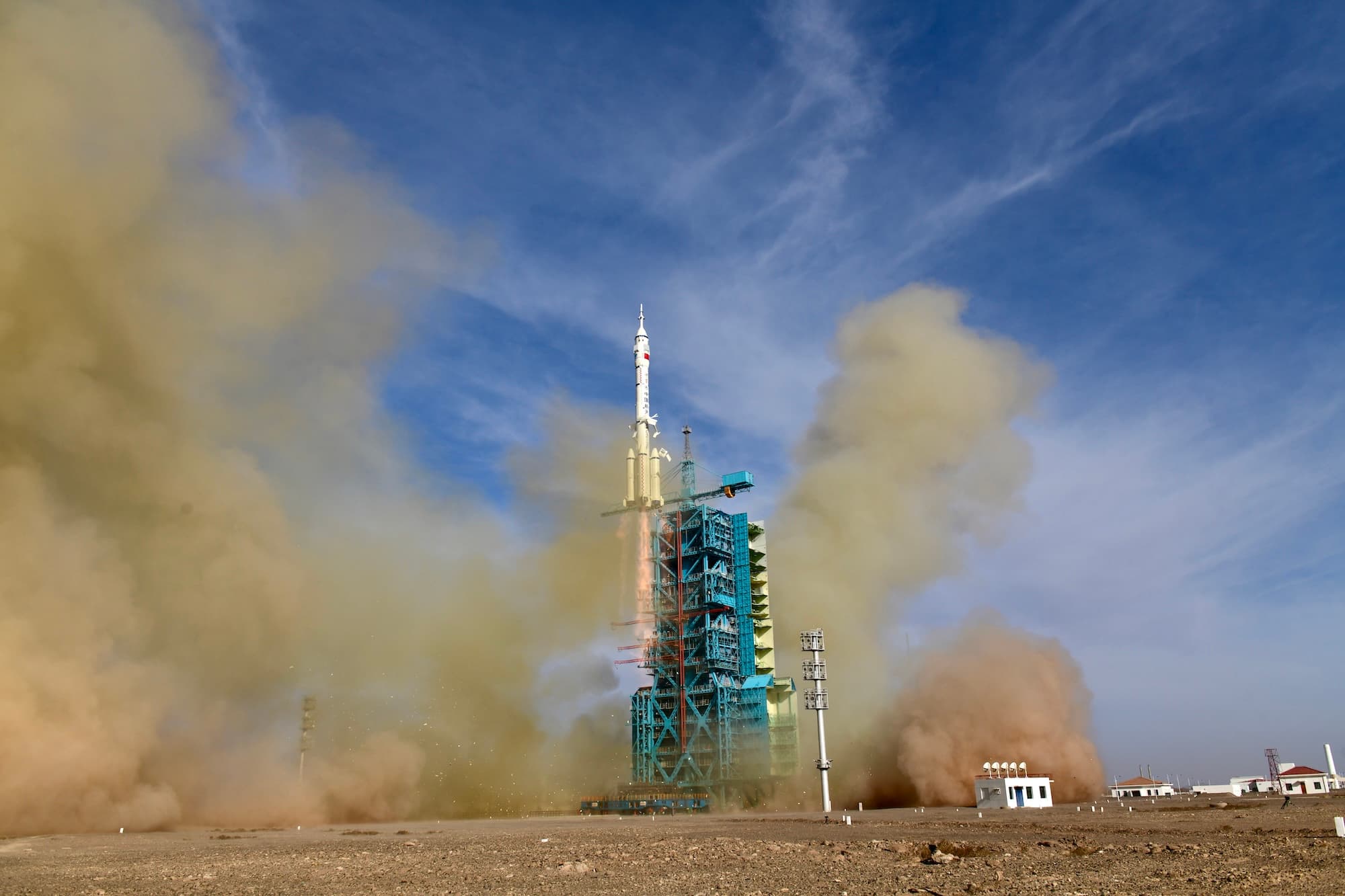Loading News Article...
We're loading the full news article for you. This includes the article content, images, author information, and related articles.
We're loading the full news article for you. This includes the article content, images, author information, and related articles.
The successful emergency launch of Shenzhou-22 to retrieve stranded astronauts highlights China's growing space capabilities and the increasing global threat posed by orbital debris.

China successfully launched an uncrewed Shenzhou-22 spacecraft on Tuesday, 25 November 2025, in a high-stakes emergency mission to provide a safe return vehicle for three astronauts aboard its Tiangong space station. The operation was initiated after their original return capsule, Shenzhou-20, was deemed unsafe following damage from a suspected space debris strike earlier in the month.
The Long March-2F rocket carrying the Shenzhou-22 'lifeboat' lifted off from the Jiuquan Satellite Launch Center in the Gobi Desert at 12:11 PM Beijing Time (7:11 AM EAT), as confirmed by the China Manned Space Agency (CMSA). In a remarkably swift rendezvous, the spacecraft docked with the Tianhe core module of the space station just over three and a half hours later, at approximately 10:50 AM EAT.
The chain of events began on 4 November 2025, when the Shenzhou-20 crew, preparing for their scheduled return, discovered small cracks in the viewport window of their capsule. Chinese space officials concluded the damage was likely caused by an impact with a micrometeoroid or piece of orbital debris, rendering the vehicle unsafe for the intense heat and pressure of atmospheric reentry. This left the three-person crew—Chen Dong, Chen Zhongrui, and Wang Jie—temporarily stranded.
In a carefully orchestrated contingency plan, the CMSA decided to use the newly arrived Shenzhou-21 spacecraft, which had delivered the next crew rotation on 31 October 2025, to bring the Shenzhou-20 astronauts home. They landed safely on 14 November 2025. However, this solution created a new problem: the Shenzhou-21 crew—Zhang Lu, Wu Fei, and Zhang Hongzhang—were left without a viable lifeboat for 11 days in case of a station emergency.
The rapid turnaround for the Shenzhou-22 launch, accomplished in just 20 days from the initial incident, demonstrates the effectiveness of China's "rolling backup" strategy, where a standby rocket and spacecraft are kept in a state of near-readiness. The CMSA described the mission as a "successful example for the international aerospace field in efficiently responding to emergencies." The uncrewed capsule also carried over 600kg of essential supplies, including food, medical equipment, and a specialized kit to repair the damaged window on the Shenzhou-20 craft, which remains docked to the station for further experiments.
This incident underscores the growing threat posed by space debris. With hundreds of thousands of untracked objects orbiting Earth at speeds exceeding 28,000 kilometres per hour, the risk of catastrophic collisions with operational satellites and crewed spacecraft is a significant concern for all space-faring nations. Experts have called the event a "massive wake-up call" and highlighted the need for greater international cooperation on space traffic management and rescue protocols.
While this mission has no direct operational link to Kenya, it occurs within a context of deepening space cooperation between Nairobi and Beijing. A recent report from the U.S.-China Economic and Security Review Commission highlighted Kenya's role in China's expanding global network of ground stations, which are crucial for tracking and communicating with space assets like the Tiangong station. The Luigi Broglio Space Centre in Malindi, for instance, provides tracking support for Chinese crewed missions. Furthermore, in 2022, Kenya was reportedly selected as one of the first countries to conduct research aboard Tiangong, signalling a growing partnership.
This successful rescue mission solidifies China's position as a major space power, capable of complex, independent operations. For Kenya and other emerging space nations, it demonstrates the advanced capabilities of a key partner while also serving as a stark reminder of the inherent risks of space exploration. As the Kenya Space Agency advances its own ambitions, including the potential development of a domestic launch facility, the lessons from the Shenzhou-20 incident—particularly regarding the dangers of orbital debris and the necessity of robust emergency preparedness—will be critically important.
Keep the conversation in one place—threads here stay linked to the story and in the forums.
Other hot threads
E-sports and Gaming Community in Kenya
Active 6 months ago
Popular Recreational Activities Across Counties
Active 6 months ago
Investing in Youth Sports Development Programs
Active 6 months ago
The Role of Technology in Modern Agriculture (AgriTech)
Active 6 months ago